How To Choose A Website Designer
This content is taken from the book “Love At First Site”
How To Choose a Website Design Company or Web Developer
You never know who you are sitting next to
Sitting on a return trip flight home from Melbourne to the Gold Coast, I (the author) was sandwiched between a young mother and a business woman. I struck up a conversation with the young mother on my right who turned out to be a graphic designer. Speaking with the graphic designer about the type of work she does, the conversation was eventually directed to websites, which I am always interested in getting people’s opinions on. I asked, “Do you do much work with websites?”
Her response was a very blunt one. “Web designers are a pain in the ass!”
Wow, I thought. This will be an interesting flight…
The stressed-looking business lady seated to my left overheard this and coincidentally it turns out she was also struggling with her website at the time. Before I was able to get two words in she passionately professed, “I have had the WORST experience with web designers also!”
Intrigued, I let the two ladies continue to share their horror stories which consisted of being bitterly disappointed with unresponsive support, bad communication, slowness of delivery, crappy design and being locked into proprietary (closed) platforms.
Five minutes of back and forth passionate banter ensued while I sat silently in the middle biting my tongue, taking it all in. Once the business lady and graphic designer had finished venting, they turned to me and asked “What do you do?”
I confessed I was a web designer and thought to myself, how has this profession been lumped in the same category of politicians and used car salesmen?
One big disappointment – why is this so?
The market place is awash with badly educated, young brat web designers using the wrong tools and horrible design. The general industry perception is very poor and rightly so. Unreturned phone calls, broken promises, unexpected bills and blown out deadlines. There seems to be a certain cavalier attitude with web designers that they can almost get away with anything. Every day there is a new story of a trail of destruction.
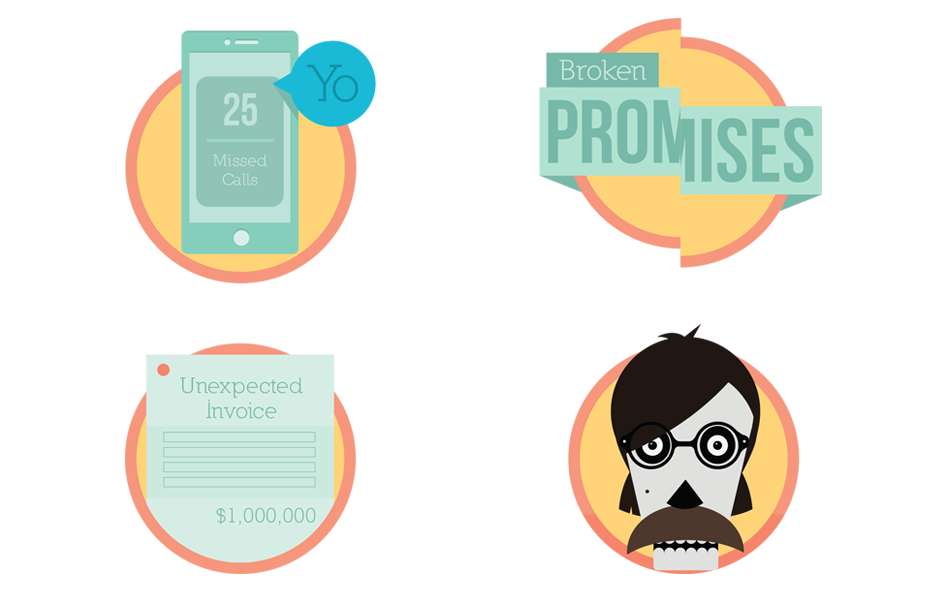
Partnering with the wrong company can be costly in both time and money. This chapter is designed to ensure you find the best company that will realise your dream of a great looking website that will drive results for your business.
Why partner with a web designer?
There are so many different ways to get your website built. You can try to build it yourself. You can use a ‘work from home’ freelancer or a fresh out of uni kid. Alternatively you can find a freelance web designer operating with low overheads in a foreign country on a service such as elance.com or odesk.com (where you hire a programmer on an hourly or project basis). The other option is to partner with an established digital agency. It’s a very important decision. And a sizable investment. The wrong decision can be costly.
Small business owners are best suited working with an agency due to the different skill sets a team can bring to the table. By working with an agency with a team, you reap the benefits of each person focusing on their individual skills such as project management, design, development, copywriting, photography and video. This gives you the leverage of a team and no single ‘break-point’.
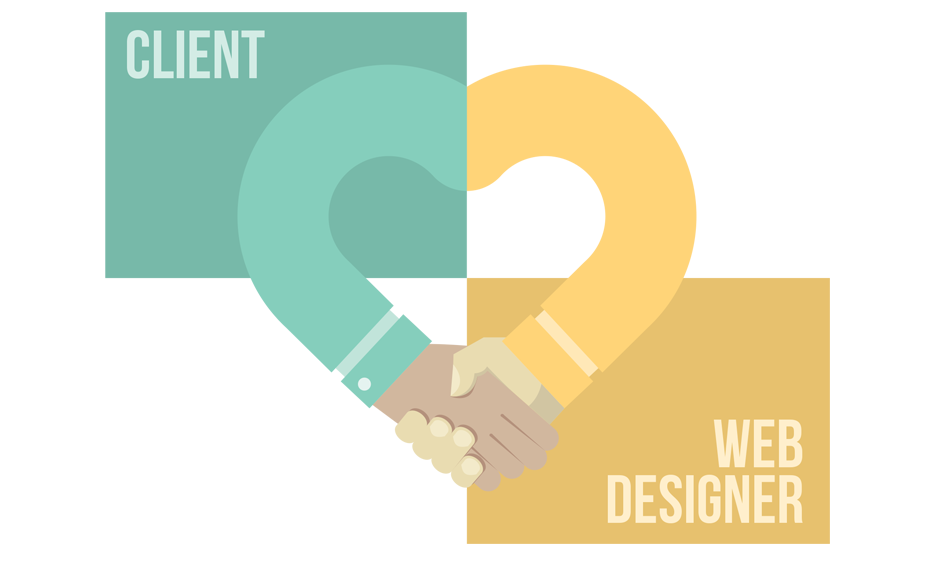
For a small business the ultimate goal is to minimise your risk. A solo freelancer may have all the skills you require. What happens if they get hit by a bus or just decide to stop returning your phone calls, will there be someone else to fill their shoes?
It’s also more likely that a design agency has employee management protocols in place where annoying facets of customer service like unreturned phone calls and slow progress are jumped on by the boss. Being able to query something with a supervisor is always a good backstop for the progression of your project.
How to get the most out of your digital agency
There are many things that a small business owner can do to get the most out of a digital agency. By doing your research (such as reading this book) you are off to a great start. It will really help you to provide a clear, concise brief on the project and clarify in your mind what success looks like to you. You should ask lots of questions prior to contracting an agency and the list at the end of this chapter will be very helpful.
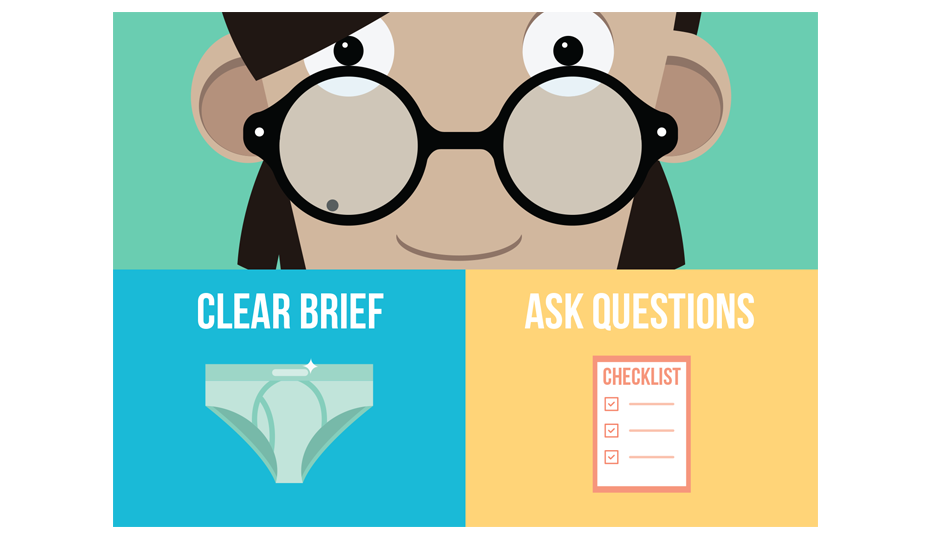
So how to choose a website designer?
You have been hurt before, will you ever be able to trust again?
Sounds like a cheesy dramatic love story but so many businesses have been burnt along the way by poor providers it is hard to have confidence again. The best type of introduction is via a referral. Ask your family, friends and extended network about the providers they have used and ask for relatively detailed feedback on the work completed.
The biggest measure of a good digital agency is their portfolio of work. Is there a consistent creative flair across all their work? Or do all their samples look the same? Ideally each of the examples should be handcrafted, unique and bespoke to each client’s brand and they should not have a templated feel.
The second most important factor is, are they practicing what they preach? Check their blog and social media profiles to see how often they update their posts. This is a good indication of whether they are exercising market leadership within their industry.
Finally, pick up the phone and test their support and communication skills. Can you easily get hold of someone to speak with or does it take them two days to return a phone call? Are they forthcoming with information and able to answer all your questions? Do you feel reassured that they understand your brief and requirements? Communication in a friendly and comprehensible manner will be key to your success because if you don’t understand what’s happening you’ll struggle to make the right decisions. A good, reliable team that communicates in plain English does exist – so keep on looking.
How much should it cost?
The issue of cost is a tricky one. On the one hand, you have a client who is trying to get a product for the lowest possible cost for the best possible solution. The flip side to this is a digital agency that is paying staff and trying to maximise profitability while still delivering a great product. It should be win, win for both parties. Don’t forget that the agency has considerable overheads to cover, especially if you are employing a company with several staff who have the different skills your project will require.
The reality of the situation is, like most things in life, you really do get what you pay for.
Prices can range from hundreds of dollars for a cookie cutter ‘templated’ solution through to tens of thousands. The problem being that no two solutions are the same in terms of design, process and customer experience.
The simple fact is that a well designed, high performing website should bring in hundreds of thousands of dollars of work over its lifetime (if done correctly). If we accept that fundamental premise then an investment of between $5,000 to $10,000 seems like a small price to pay for a very profitable sales machine.
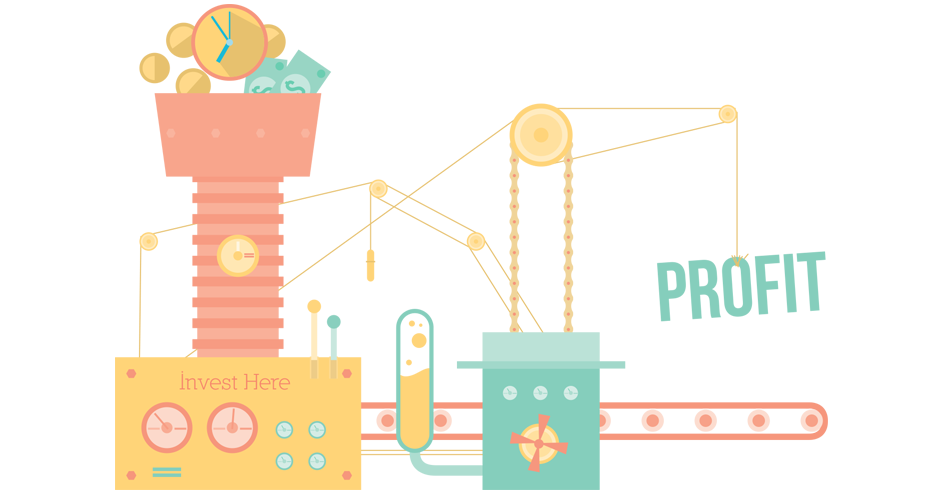
It comes down to the value proposition presented by the digital agency and how much a client can pay. It will be a trade-off between the expected ROI and the capital investment needed to generate that ROI. Every business has input costs associated with the preparation of its goods for sale and website design is just one of many. A good agency will be forthcoming with ideas and completely transparent. Like all relationships, trust will be a big driver. The prospective agency should go through a detailed scoping and discovery phase with you. A common understanding and agreement needs to be reached between both parties on what will physically be delivered.
How to write a clear website brief
Just like any big project, you need a plan. I am sure you have heard your grandfather once say “Failing to plan is planning to fail”. A good digital partner should guide you through this planning process. Be clear in your mind on what you want before heading in to this process and you’re more likely to achieve success.
Putting pen to paper and clarifying your vision for the website is a great process to go through. It will force you to solidify your ideas and get them out of your head. The end result should be a thorough and informative document that crystallises your purpose and objectives. Think of this as your website wish list.
This can then be used to elicit proposals for your new website from different web designers. The clearer you can say what you want by investing ‘think time’ up front, the more likely you will end up with a website that works for your business. To put it very bluntly, “crap in, crap out!”
An added benefit to creating a briefing document is that it is a tool to pull a stray project back on track down the line. It keeps the web designer accountable if they don’t deliver or want to increase the budget further down the track.
The brief framework
So what should you provide to your digital agency before starting a new web project? Here are some suggestions that will give the web designer a detailed snapshot of your business.
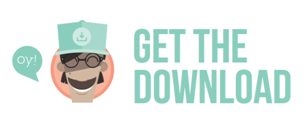
Download the Love – Blank templates you are free to use and distribute. You can get these all here: https://www.fivebyfive.com.au/book
Overview of who you are
- Provide a paragraph about your company (your elevator pitch). Who you are and what you do.
- What is your industry?
- What is your position within that industry?
- How does your business make money?
- How are you unique?
- Are you operating locally, regionally, nationally or internationally?
- What problem does your product solve in the market place?
- Why do you want a website?
- Will your website be a way of generating leads and enquiries or is this purely for credibility and having a presence?
- 10. Who are the decision makers on this project?
Your target audience
- Who are you trying to target with the new website?
- Describe the profile of your ideal customer (detail their fears and desires).
- What are some of the common traits of this group? (Details such as income, habits and hobbies.)
- What is important to them when they purchase from you?
- What is your target audience’s pain point? (What keeps them awake at night?)
Your current website
- . Why are you replacing or rebuilding the old website?
- What do you like about your current website?
- What do you dislike about your current website?
- Do you have access to your current website statistics and can you share these with our team?
- What percentage of traffic is derived from a mobile device such as a smartphone or tablet?
- How many sales/enquiries does the current website receive?
- Who currently maintains the content on your website?
- Who hosts your website?
Your new site
- What does success look like to you? (More traffic, sales, response rates, leads generated, better reputation?)
- Do you have a site map? (A tree-like structure of how the different pages within your site hang together) – refer over the page.
- What is the estimated number of pages?
- Is there any additional custom functionality which is required on the website? For example, shopping cart, forms, secure member areas etc.
- What is the most important thing for a visitor to do when they arrive at your website? For example, fill out the contact form, pick up the phone or make a purchase?
Other important things
- What is the proposed budget for this project?
- Who will be the key contact throughout this project?
- What is the required launch date?
- Are there any existing suppliers or partners we will need to work with?
- Who will be responsible for writing the content for the website?
- Do you have images and photography which you can provide?
Look and feel
- Describe the desired look of your new website.
- Do you have an existing style guide for your brand?
- List three websites you LIKE the look of and detail why.
- List three websites you DISLIKE the look of and why.
Proposed sitemap
A sitemap is a visual tree-like structure used to map out how each of the pages will hang together. It is a good process to map out each of the pages that will make up the site and list the different features of functionality required within the website.
50 questions you can ask your web designer before building a website
In my experience you can never ask too many questions in life. Specific to the web design process this is a good measure of how forthcoming and helpful your new web designer will be. If someone takes the time and effort to answer each one of your questions thoroughly it is a good sign they have your best intentions at heart. They will invest the time to educate you on the web design process to ensure you feel confident.
You don’t have to ask every one of these questions but pick and choose what is relevant to your business. They will also trigger further ideas.
Experience
- Have you worked on other websites in my specific industry?
- Can I see examples of your previous work in a similar price range to my proposed project?
- Can you provide references and contact details of past clients so that I can speak with them direct?
Process
- What is the framework or process that we will follow when building the website?
- Who is responsible for preparing the website content?
- Can you recommend a direct response copywriter who is experienced in writing results driven copy?
- How long will my website take to build?
- Do you include sourcing and purchasing images as part of your proposal or will this be an additional fee?
- Will you deliver a final packaged copy of the website to me for future reference?
- When can you start?
Design
- What is the process if I am not happy with the first design that is presented?
- Do you have a dedicated graphic designer on staff who is an expert in user interface design and conversion optimisation?
- How many rounds of design changes are factored into your process?
- Will you keep working on the proposed design of my website until I am completely happy?
Tools
- What is the content management system you will use to build my website?
- Do you utilise templates or will the layout be designed and built from scratch?
- Where and by whom will my website be hosted (if you are providing website hosting)?
- Do you host our email and will you help me configure my email accounts?
- What is the website backup process to ensure I always have an up-to-date backup to roll back to?
- Will you keep WordPress and associated plugins up to date and secure as part of your hosting fee?
- Will you install Google Analytics?
- Via Google Analytics, will you help set up goal tracking?
- Will you set up regular Google Analytics reporting to be delivered to my inbox so that I can see the traffic to my website?
- What will you do to make my website search engine friendly?
- Who will be responsible for the onsite search engine optimization of my website?
- Will you implement 301 redirects (capturing any old traffic from existing search engine listings or URLs) on my website when it is launched?
- Will you test my website in a variety of different devices, platforms and browsers?
- Can you integrate social media widgets into my website?
- Will my website be mobile friendly and look great on lots of different mobile devices?
- Will you ensure my website looks good on a retina display screen?
- Will all source files be provided including layered Photoshop files and all other working files?
- How will you ask for feedback during the web design process? (Do you have any online tools for providing real time feedback?)
- Will you test the load time on my website and ensure it loads in under three seconds?
- Can I collect money via my website through PayPal or via credit cards?
- Will you install an SSL certificate if accepting payments via the site?
Team
- Can you describe your team and the different people we will be working with during the process?
- Will there be one central point of contact throughout the process?
- Do you have a physical office that I can come and visit you to meet face to face?
Money
- Do you offer a money back guarantee on your work?
- What are the payment milestones for the project?
- Are there any other unexpected costs that I should be aware of?
- How much will the total project cost?
- Who owns the website after final invoice payment?
- How will we negotiate ‘project creep’?
Ongoing Support
- When I send you an email, how long will it take you to respond?
- Will you train me on how to use my new website?
- Will you provide training documentation for future reference?
- Can you help if I need changes to the website after it is launched?
- How do you charge for ongoing updates to the website?
- What happens if our working relationship doesn’t work out and I want to move?
Summary
Don’t get stuck in a bad relationship. This is the fork in the road. Big decisions to make. The wrong one can be costly in both money and time. Ensure you are comfortable with your choice of web designer by doing a bit of extra leg work up front. Trust me, you won’t regret this.
- Choosing a good website company is crucial – do your research and find someone with a good portfolio of past work.
- Keep in mind you get what you pay for.
- A web agency will likely have the team of people you need and the customer service attitude you require.
- Write a clear, detailed brief and ask lots of questions.
- Cost will depend on how customised and individual you need your site to be.
- Investing the time during briefing will improve accountability and timely progress.
In Chapter 3 we focus on the software that will be driving your website. Yawn, I hear you say? Stay with us, this is important stuff!
- Web Design Gold Coast
- Web Design Brisbane
- Web Design Melbourne
- Web Design Sydney
- Web Design Bundaberg
- Web Design Cairns
- Web Design Hervey Bay
- Web Design Mackay
- Web Design Rockhampton
- Web Design Toowoomba
- Web Design Townsville
- Web Design Sunshine Coast
- Shopify Gold Coast
- Facebook Ads Agency Gold Coast
- SEO Packages Brisbane
- SEO Packages Sydney
- SEO Packages Perth
- SEO Packages Melbourne
Five by Five acknowledges the Traditional Custodians of this land. We pay respect to their Elders past, present and emerging for their wisdom, teaching and cultural knowledge and extend that respect to other Aboriginal and Torres Strait Islander peoples.
Five by Five are based on the Gold Coast and provide great looking high performing websites for businesses Australia wide including Brisbane, Sydney, Melbourne, Adelaide, Canberra, Perth – all regions and cities of Australia.





